Caving might be one of the most dangerous activities you can take up as a hobby, and if you don’t believe me, listen to the story of Oscar Hackett Neil Moss.
The British student was a keen explorer and sports enthusiast and suffered one of the most grim deaths ever after he became trapped inside Peak Cavern, forever.
The Oxford undergraduate was just 20 when he went into the famous cave system situated in Castleton, Derbyshire on the fateful date of 22 March, 1959.
Moss joined a group of other spelunking (also known as cave exploring) enthusiasts from the British Speleological Association on an adventure through the underground.
He was with seven other cavers, keen to venture through a dangerously narrow passage located within a chamber discovered just two weeks earlier, called Stalagmite Chamber.
A scary 300m (1,000ft) below the surface, Moss decided that he would head inside the chamber to make history, squeezing through the vertical shaft – though he is remembered for something more negative than this.
Six feet tall, he was a large, slim lad and though it was determined that the passage was 40 feet deep, and featured a corkscrew in the middle that would have been ‘difficult’ to get through.
Exact details couldn’t be confirmed, but it’s believed that the student tried to move a boulder out of the way, but instead obstructed the ropes and ladders that were put there by the group to get him back up.

Moss got stuck in the narrow cave. (David Webb/James Lovelock collection)
He ended up being too heavy for the team to pull him up, and the ropes simultaneously snapped.
A few of his fellow cavers, along with Moss himself, began to feel short of oxygen, as his body was jammed in the narrow passage, blocking the airflow through his respiratory system.
The atmosphere around Moss quickly became overwhelmed with carbon dioxide, and he became disorientated before losing consciousness completely.
Three other cavers passed out as they awaited the help of a rescue team, and when they showed up, some were small enough to fit through the tunnel to free Moss, but couldn’t due to the ‘foul air’.
Sadly, the Brit was declared dead on the morning of 24 March, 1959 by an RAF doctor as he never regained consciousness, though medics could not see his body.
The entrance to the lower shaft of the cave was then sealed with loose rocks from the chamber, never to be accessed again.
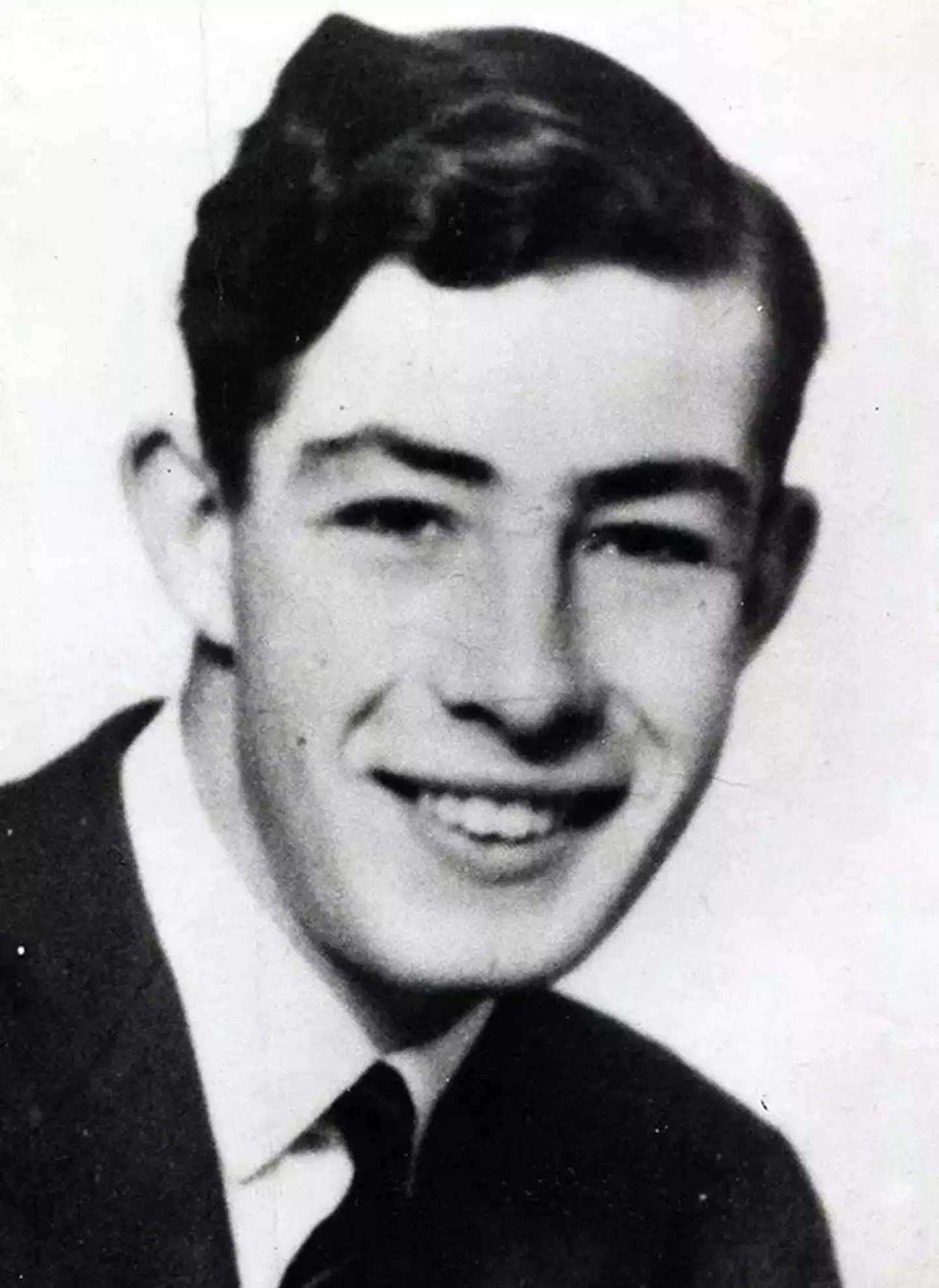
The cavern is now named after Moss. (David Webb/James Lovelock collection)
An inscription in dedication to the late Moss was added nearby, and the section of Peak Cavern is now known as Moss Chamber instead of Stalagmite Chamber.
When Moss was in the chamber, he reportedly shouted to his cave exploring companions: “I say, I’m stuck, I can’t budge an inch.”
He tried to move his body into a position that would help him, but ended up getting into a position that made it even more difficult to pull him out of the corkscrew section of the passage, where he became ‘sandwiched in an elliptical slit only eighteen inches wide’.
Featured Image Credit: David Webb/James Lovelock collection
Topics: History, UK News, Health, Environment
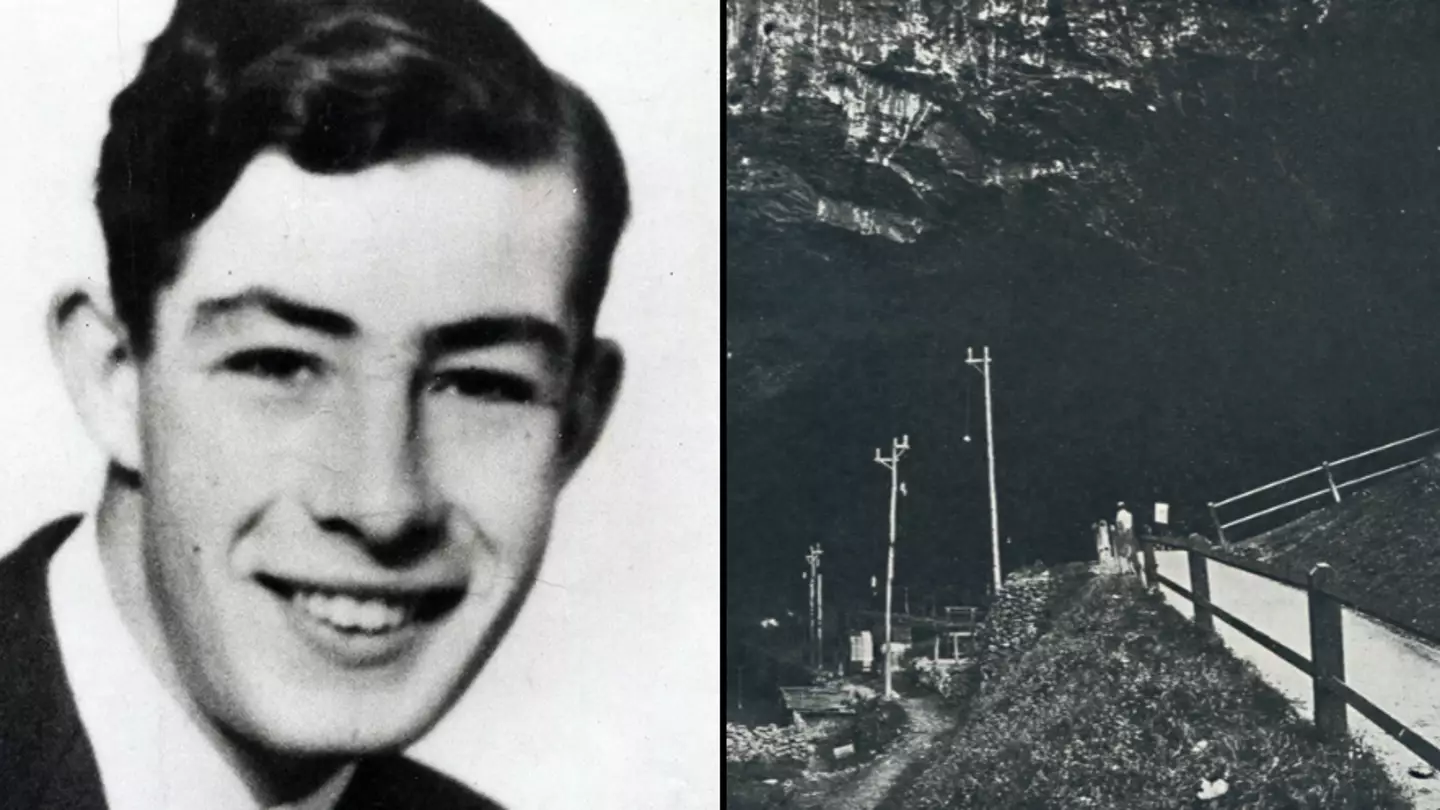
If you somehow still need to hear another cautionary tale to warn you about the dangers involved with caving, the story of Oscar Hackett Neil Moss will certainly do the trick.
The Brit is said to have suffered one of the worse deaths imaginable after his pursuit to try and go where no one had gone before when fatally wrong, and left him trapped inside Peak Cavern forever.
The Oxford undergraduate, who was a keen explorer and sportsman, was just 20-years-old when he headed inside the famous cave system in Castleton, Derbyshire, on 22 March, 1959.
Moss – referred to as Neil by his nearest and dearest – joined a group of fellow spelunking enthusiasts from the British Speleological Association on a fateful adventure deep underground, which he would never return from.
The young lad was accompanied by seven other cavers who were all keen to try and venture into an extremely narrow passage located inside Stalagmite Chamber which had been discovered just two weeks earlier.
After reaching the chamber – which was situated some 1,000ft (300m) below the surface – it was decided that Moss would be the first to head inside and hopefully make history as the first person to squeeze into the vertical shaft.
Sadly, the philosophy student is remembered for a much more devastating reason instead.
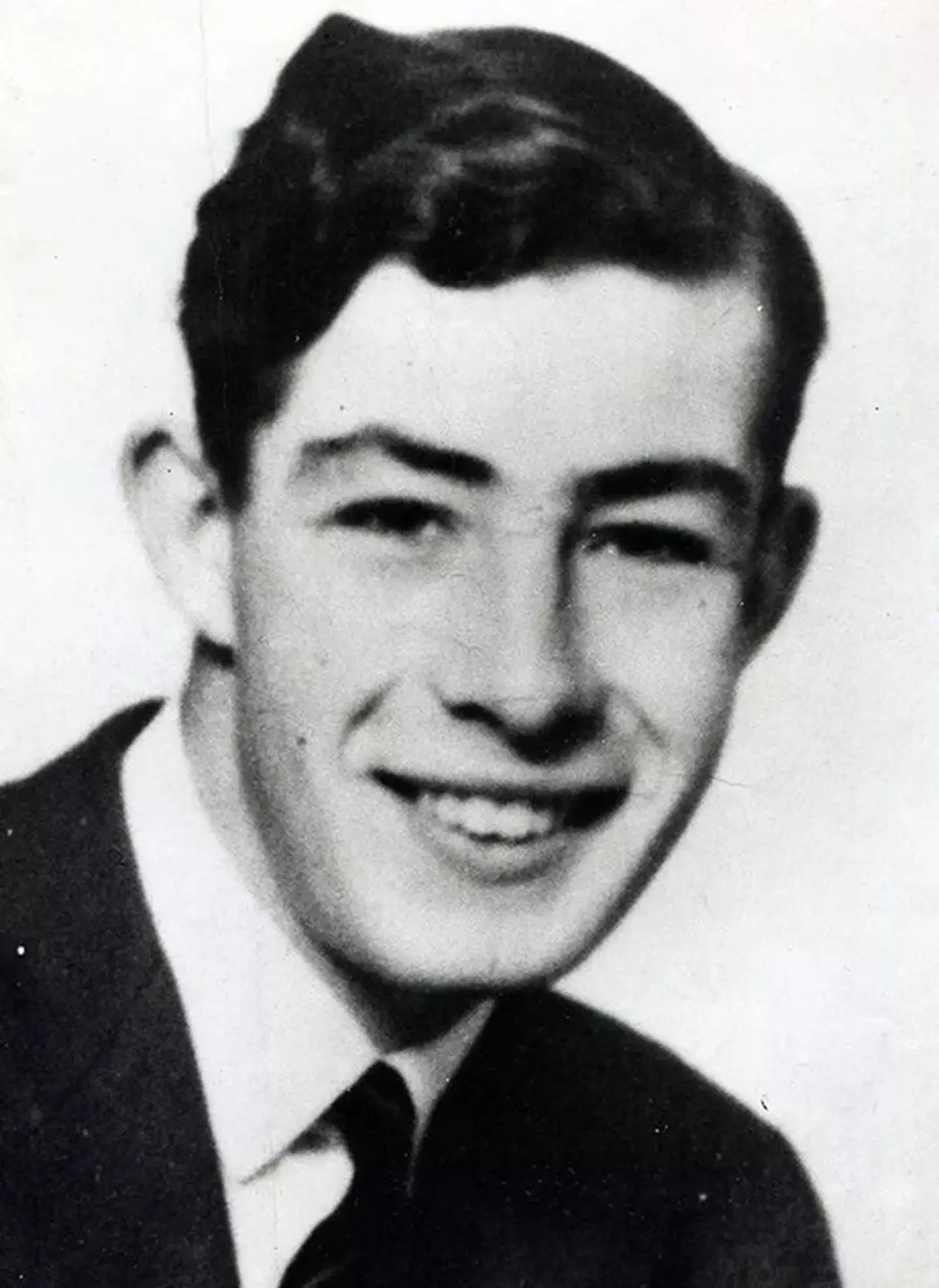
Neil Moss never emerged from the famous cave system in Derbyshire. (David Webb/James Lovelock collection)
Standing at 6ft tall, Moss was a large bloke – but he was also slim.
Before his expedition, four other cavers had already assessed the area and had noted that the passage was 40ft deep – and that there was a corkscrew twist in the middle of it which would be difficult to navigate.
Although the exact circumstances of the incident couldn’t be explicitly confirmed, it is believed that the 20-year-old came across a boulder which was blocking his path and that he attempted to move it out of his way.
But this would prove to be a fatal error – as the boulder is said to have obstructed ropes and ladders sent down by the group to get him back up.
At some point, Moss managed to tie himself to a cable, but he was too heavy for the team to lift him.
His fellow cavers persisted in their efforts to free the thrill seeker, however, the ropes they used continuously snapped.
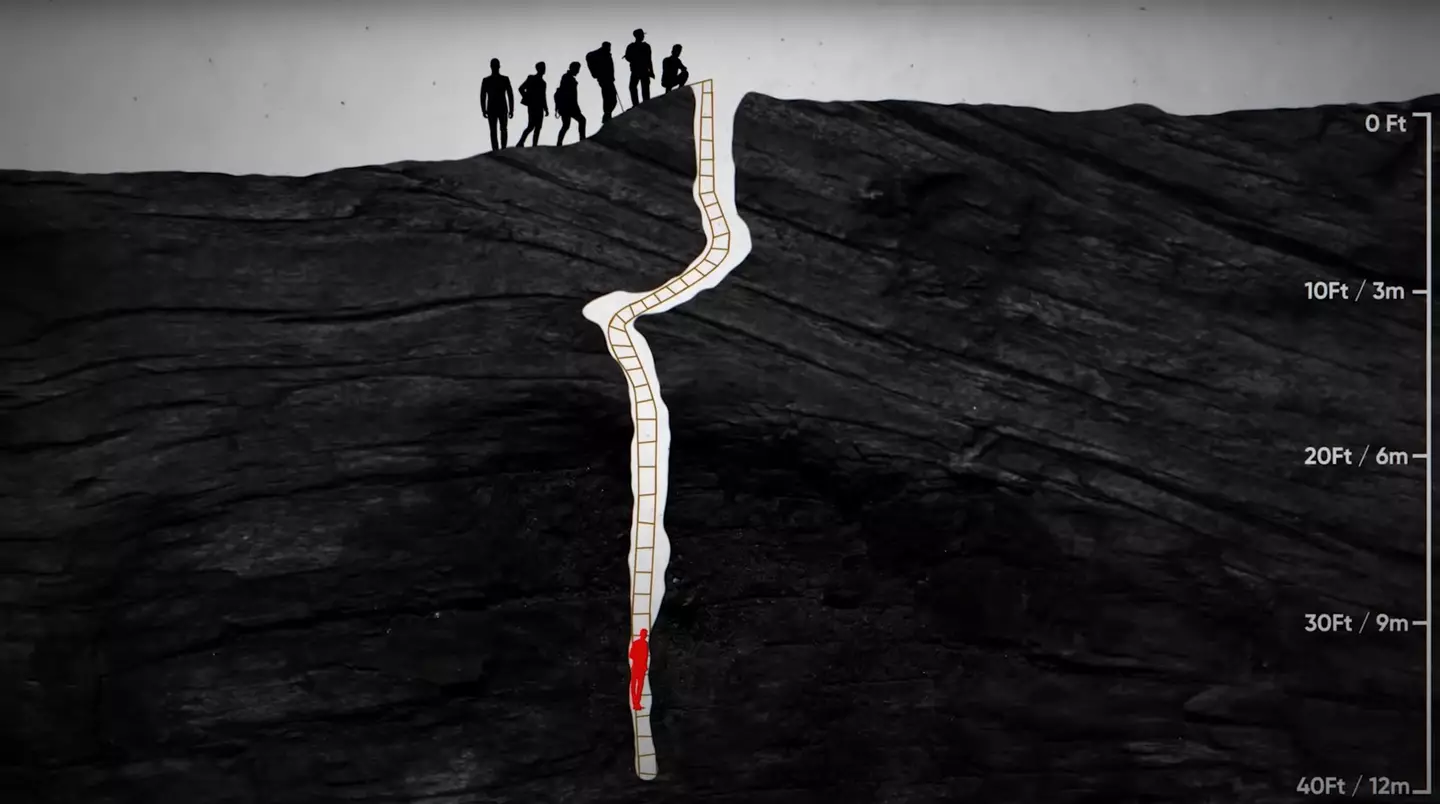
He became jammed inside the narrow passageway, which quickly became polluted with carbon dioxide (YouTube/@submerged-yt)
Moss is said to have moved his body into a position which made it even more difficult to retrieve him from just below the corkscrew section of the passage, which caused him to become ‘sandwiched in an elliptical slit only eighteen inches wide’.
He reportedly shouted up to his companions: “I say, I’m stuck, I can’t budge an inch.”
But the worst was still yet to come – as because Moss’ body was jammed inside the narrow passage, he was blocking the air flow inside of it, meaning the atmosphere was quickly becoming overwhelmed by carbon dioxide from his own respiration.
He became increasingly disorientated due to the lack of oxygen, before eventually completely losing consciousness – and his fellow cavers weren’t far behind him.
The seven others were now also suffering the same problem and three of them also passed out while they were waiting for a rescue team to arrive.
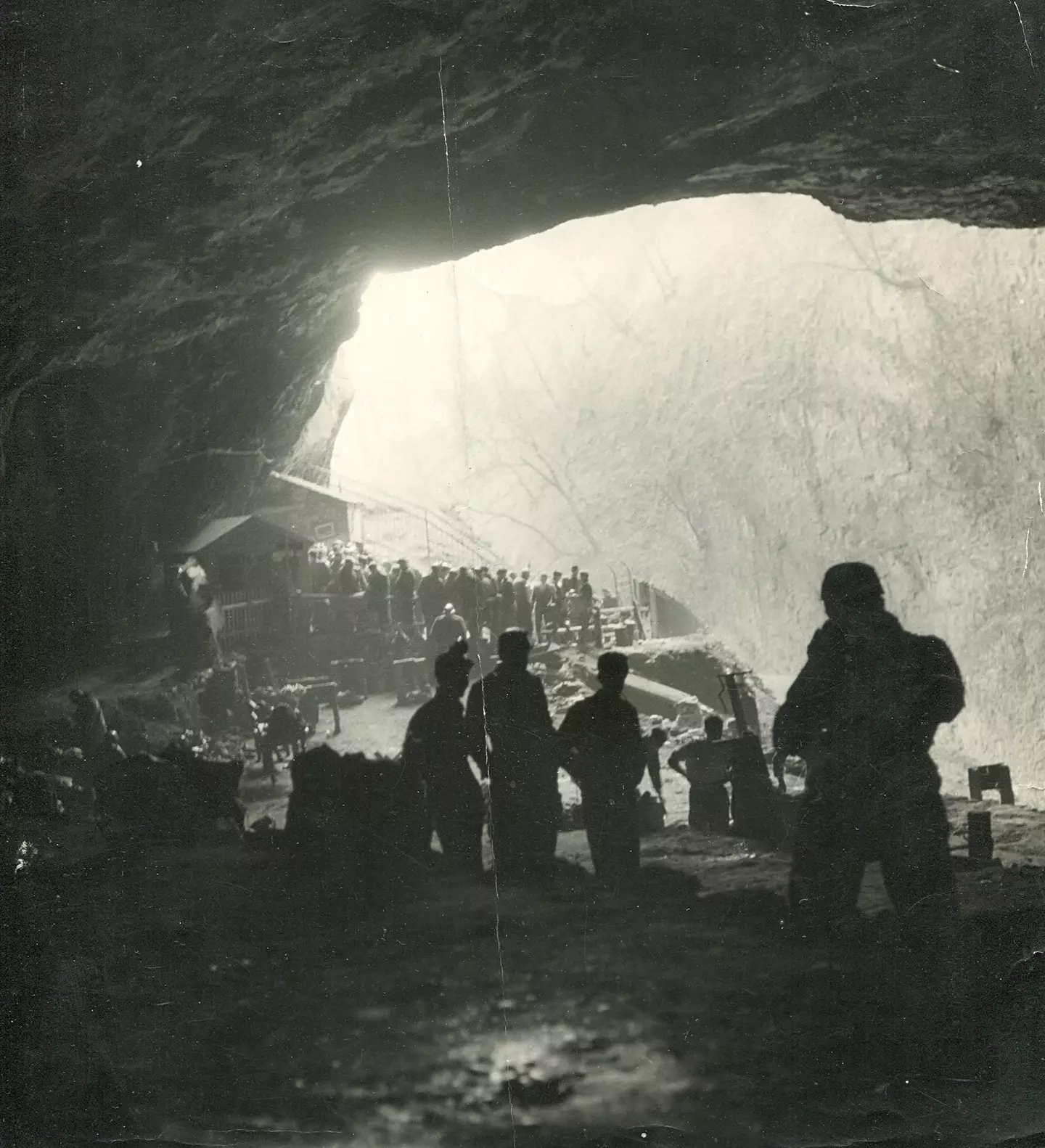
Despite a huge rescue mission, the 20-year-old could not be saved. (David Webb/James Lovelock collection)
A number of experienced cavers who were small enough to fit inside the tunnel tried to assist in the mission to free Moss, but explained they were being ‘driven back by foul air’ and struggled to get close to him.
Following the failure of the final rescue attempt, the Brit was declared dead on the morning of 24 March, 1959, by an RAF doctor as he never regained consciousness – despite the fact medics could not physically see his body.
The student’s devastated father, Eric, had spent 48 hours diligently waiting for news on his son’s fate at the entrance of the cave and urged rescuers to leave his son to rest inside of it so that no other lives were put at risk.
The entrance to the lower shaft was sealed with loose rocks from the chamber, while an inscription in dedication to Moss was later added nearby – and now, this section of Peak Cavern is known as Moss Chamber, instead of Stalagmite Chamber.
RIP, Oscar Hackett Neil Moss.

